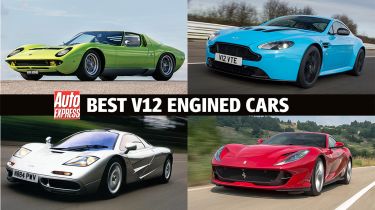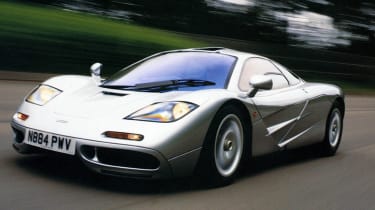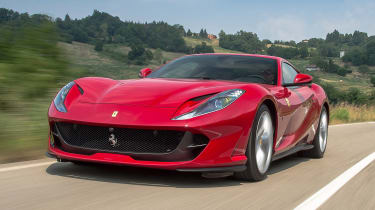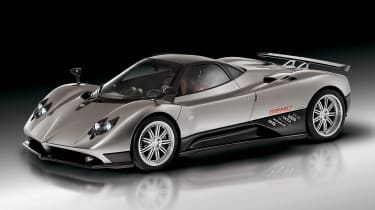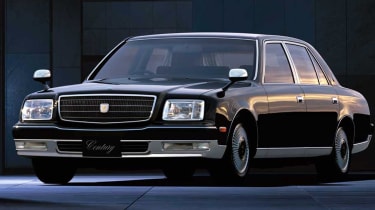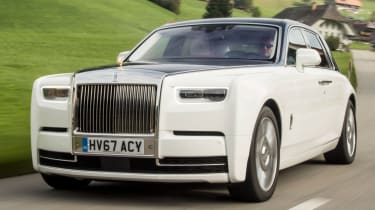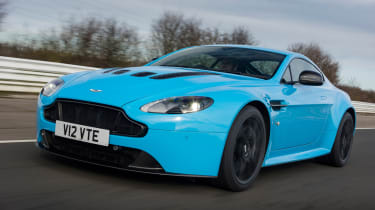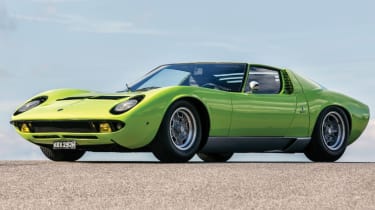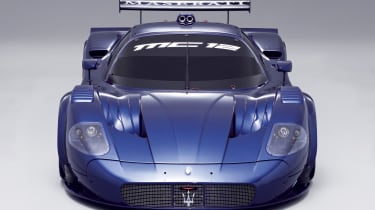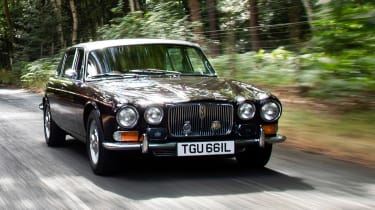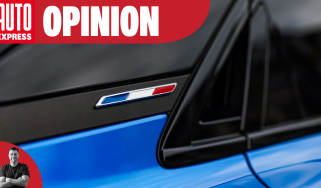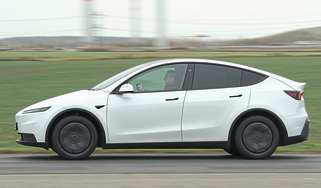Best V12 engined cars
The V12 engine may soon be consigned to the history books, but the best V12 cars will live long in the memory
In an age where electric motors can deliver all the effortless performance we’ll ever need, why is it that mere mention of the V12 engine still has such a powerful draw? Why is it that companies such as Lamborghini and Ferrari persist with such engines, when they’re clearly capable of delivering similar performance and capability with fewer cylinders, turbocharging, and hybrid drivetrains?
There are several possible answers. V12s have powered some of the most desirable road and race cars ever to put tyre to tarmac. They’re capable of creating the most intoxicating, evocative noises of any mechanical device, but from broadly the same layout, being almost as quiet and smooth as the electric motors that many luxury carmakers are now beginning to consider. It’s also comfortably the most blue-blooded of layouts - you can find V8s in SUVs and V10s in pickup trucks, but save one or two exceptional examples, the V12 is the engine of choice for supercars and supreme luxury.
It’s not difficult to nail down what makes the layout special, either. There are clearly disadvantages, from the large size required for an engine as long as an inline-six but as wide as any other vee, to the high levels of rotating mass and friction, both of which are the enemies of fuel efficiency.
But at the same time, V12s are exceptionally well balanced engines, with one cylinder firing every 60 degrees of crank rotation (and the full set being done in two rotations of the crankshaft), and each of those cylinders helping to offset the vibrations created by the others. That’s beneficial in terms of refinement and, if necessary, reducing noise, but with so many power pulses going on at any one time, careful tuning of induction and exhaust can also turn a V12 into a spectacular musical instrument - watch any video of a pre-1995 Ferrari F1 car and you’ll get some idea of their sonic potential.
All of which leads us to the central question here. What are the best V12 cars ever built? We bring you our answers in the list below…
- McLaren F1
- Ferrari 812 Superfast
- Pagani Zonda
- Toyota Century
- Rolls-Royce Phantom
- Aston Martin V12 Vantage
- Lamborghini Miura
- Maserati MC12
- Vector M12
- Jaguar XJ12
Best V12 engined cars
1. McLaren F1
If you were to reduce this list down to just a single, definitive example of the greatness of V12 engines, you could do far worse than to strip away everything but the McLaren F1. Since 1992 it has been considered one of the finest supercars in existence, and its 6.1-litre BMW-developed V12 one of the most intoxicating powerplants ever fitted to a vehicle.
You could name virtually any part of the F1 that made it exceptional - the carbon monocoque construction, its central driving position, greater luggage space than many hatchbacks of the era - but its V12 is still the star of the show. F1 creator Gordon Murray had originally wanted a Honda engine, but when that wasn’t possible he turned to BMW and the genius of Paul Rosche. BMW created a 6,064cc, naturally-aspirated, dry-sumped masterpiece capable of 627bhp and, thanks to the most minimal of flywheels, responses akin to an F1 engine.
Its performance figures were staggering at the time and have bolstered its legendary status, with a 0-60mph time of little over three seconds, and in March 1998, a world record top speed for a production car of 240.1mph. Others have gone faster, but perhaps the only car that could truly top it is Murray’s own upcoming T50 supercar...
Truth be told, this list could be entirely populated by Ferraris, but as its wildest and most powerful naturally-aspirated (and non-hybridised) road car yet, Ferrari’s 812 Superfast is probably the ultimate expression of what Maranello is capable of when it arranges twelve cylinders in a vee.
One thing all Ferrari V12s have had in common since the Enzo of 2002 is Ferrari’s “F140” engine family. First introduced in 6-litre form and making 651bhp, both output and capacity have climbed over time, to the point that the Superfast now develops a staggering 789bhp from 6.5 litres. As is often the case with a good Ferrari engine though, it’s the quality rather than quantity of the performance that prickles your nape - redlined at 9000rpm, the 812 howls like an old Grand Prix car and delivers enough thrust to make a nun curse like a sailor.
When shrink-wrapped within the 812’s sharky bodywork the dramatic speed is backed up by lightning-fast steering response but also surprising civility - back off, and the Superfast is as much a grand-tourer as a super sports car. Thankfully, Ferrari is showing no signs of ditching its V12s, so we’ll get to enjoy it for a few more years to come.
3. Pagani Zonda
It’s rare that smaller, boutique manufacturers can develop their own powertrains from scratch. That was as much the case for the Pagani Zonda that debuted in 1999 as it was for the McLaren F1 that emerged seven years prior, but while McLaren went down the BMW route with its 6.1-litre engine, Pagani instead knocked on Stuttgart’s door to procure a six-litre V12 from Mercedes-Benz.
Before it was slotted in the back of the 1990s’ most dramatic automotive shape, Merc’s “M120” V12 had seen service in the much more demure “600” versions of S-classes, SLs and CLs. There it was known for its refinement, but for the Zonda C12 it was fettled by AMG, making a round 400bhp - a figure closer to the contemporary Ferrari 360 than the hypercars it began to scare later in life.
The important part though was that with more exotic exhaust plumbing it developed a true supercar howl and still hit 60 in four seconds flat. Subsequent Zondas made as much as 789bhp (in 2012’s Zonda Revolución) but the car is known as much for its incredible styling and intricate cabin design as it is for that AMG engine. You sense that V12 or not, the Zonda would still have made an impact.
4. Toyota Century
To date, there has only ever been one road-going Japanese V12. You’ll find that engine in the second-generation Toyota Century - a luxury car sold in its home market alone between 1997 and 2017, and best known for its role carrying Japanese dignitaries (and perhaps a few underworld characters) from place to place.
While many of the V12s on this list were designed primarily for performance, the Century’s 5-litre “1GZ-FE” V12 plays on another characteristic of this engine layout: impeccable refinement. Effectively a pair of inline six engines, V12s are known for being perfectly balanced, with minimal time between each cylinder firing and vibrations from each piston’s stroke damped by their neighbours.
That makes it a natural choice for a luxury car, and the Century’s own unique brand of luxury makes it even more special - most owners enjoy wool-trimmed seats to avoid the unseemly creaking of leather, while Toyota keeps an astonishingly in-depth build record of every Century it has ever made, recording details at every step of the process. With some Centurys now filtering into the UK through importers, it’s also now an incredibly cost-effective way of acquiring one of the world’s great luxury cars.
For much of its post-war history Rolls-Royce had installed V8 engines in its stately luxury vehicles. Under BMW ownership in 1998 though that all changed, and while the Silver Seraph launched in 1998 looked and felt similar to Bentley’s equivalent Arnage, it used a very different engine: a 5.4-litre BMW V12. It became the first V12-powered Rolls-Royce since 1939’s Phantom III (though historians will note, Rolls-Royce was responsible for a reasonable line of V12s during the Second World War, too…)
Appropriately it was another Phantom-badged vehicle that would continue the Rolls-Royce V12 lineage, 2003’s seventh-generation Phantom. The first Rolls-Royce to be fully developed under BMW ownership, and produced at the firm’s new facility in Goodwood, it’s one of the most recognisable luxury cars ever produced, not least for popularising the brand well outside of its traditional “old money” clientele base.
Under the enormous bonnet was a 6.75-litre “N73” V12, similar in design to that used by the divisive E65-generation BMW 7-series of 2003, but granted extra capacity for the Phantom application. Few engines have ever been more refined, and uniquely, Rolls-Royce replaced the expected tachometer with a “power reserve” gauge, instead indicating how much of the V12’s 453bhp and 531lb ft you had left to deploy...
History will probably record 2005’s Aston Martin Vantage as one of the best cars the marque has ever produced. It arrived at a strong time for the brand, hot off the heels of the well-received and beautifully-styled Vanquish and DB9, but distilled their stunning looks into a more compact, rakish and driver-focused package.
Those early Vantage models were of course powered by V8s, but in late 2007 Aston Martin revealed a new V12-powered Vantage in concept form. The production model would debut two years later and that combination of the Vantage’s pert styling, compact footprint, balanced chassis and a 5.9-litre V12 must be one of the most desirable of its era.
If there’s a let-down, it’s that the car was initially available only with Aston Martin’s automated-manual transmission. A manual (an unusual seven-speed with a dog-leg first) wouldn’t be made available until 2016, and then only in very limited numbers for certain markets. But the creamy power delivery of the 510bhp 5.9-litre unit (later rising to 565bhp with the V12 S and up to 592bhp with the V600), the spine-tingling sound and the blistering performance all built upon the existing strengths of that 2005 Vantage.
7. Lamborghini Miura
Lamborghini’s Miura set the template for all supercars to follow, and began a lineage that still continues today with the V12-powered Aventador. For that alone it deserves a place in history, but the fact it’s generally considered among the world’s most beautiful cars makes the Miura special even if you ignore the twelve cylinders firing away behind the bulkhead.
Unlike many modern supercars, but not unusual for the time in which it was made, the Miura’s mid-mounted, 3.9-litre V12 was actually installed transversely in the car. This undoubtedly allowed for the car’s pert proportions, something accentuated further by the unit sharing space with the gearbox and differential, much like the original Mini. Those who’ve driven one would concur it’s by no means the most dynamically-adept car of its era, and the sleek styling caused its own issues for high-speed aerodynamics, but the Miura’s no less of a legend for either of those things.
The V12 itself though had a long life. Designed by Giotto Bizzarrini, it first saw use in 1963 in the front-engined 350GT, and variants of it didn’t finish production until 2011, by which time it was making up to 661bhp in the back of a Murcielago.
8. Maserati MC12
Are we cheating by including the Maserati MC12 in the same list as the Ferrari 812 Superfast? We don’t think so - they might both use a derivative of Ferrari’s F140 V12, but they’re very different cars designed for very different jobs, and the MC12 proved that the 6-litre unit was far more than just a great road car engine, but also an effective powerplant for racing.
That’s because the MC12 was a homologation special, designed for competition in GT1 racing. As a result only 62 were ever produced (fifty road cars, with the remainder in race trim), significantly rarer than the 400 Ferrari Enzos that found homes. Why the Enzo comparison? Because the MC12 was effectively Maserati’s variant of that car, and used a variant of its engine.
It made for a hugely successful race car, taking 40 victories from 94 starts, as well as six teams’ titles, two constructor victories and allowing for six drivers’ championships too. Like the other cars in this list then, the MC12 wasn’t defined by its V12 engine, so much as enabled to fulfil its potential by it. With MC12s often trading for more than $2 million at auction, it’s keeping its owners happy in other ways, too!
9. Vector M12
Much like Japan and the Toyota Century, America is not a country particularly known for V12 engines. But whereas Japan might be better known for highly-strung four-cylinders, the US has traditionally found expertise in low-revving, stump-pulling V8s. One of those V8s could be found in twin-turbocharged form in the Vector W8 launched in 1999, but appropriately for a car that could be considered America’s Lamborghini, Vector would use a Lamborghini V12 from 1995.
The recipient was the M12, and while visually similar to the sci-fi W8, the M12 was more or less a Lamborghini Diablo under the skin, up to and including the use of its 5.7-litre Bizzarrini V12. The strange combination was the result of both Lamborghini and Vector being owned at the time by Indonesian firm Megatech.
Whereas Lambo was acquired in 1998 by the Volkswagen Group though, extending the life of the Diablo and spinning off into a line of other successful vehicles, the 189mph M12’s life was short. With the firm unable to pay back its Lamborghini creditor for the V12s, production stopped abruptly in 1999. Vector still exists and has shown prototypes in the two decades since, but America hasn’t really touched V12 engines since...
10. Jaguar XJ12
Like the Toyota Century and Rolls-Royce Phantom elsewhere on this list, the XJ12’s calling card has always been refinement. The Series 1 Jaguar XJ launched in 1968 set new standards for the era and in many respects it took several years for rivals to even come close to its levels of refinement and ride comfort. That was with just six cylinders too, courtesy of the long-running XK engine series that Jaguar had been producing since 1949.
From 1972 though another engine joined the fray. Jaguar had toyed with V12s since the 1950s and one was installed in the XJ13 race car produced, but never raced, in 1966. But in 1971, Jaguar installed its new 5.3-litre V12 under the thrusting bonnet of the E-Type. The E-Type itself was by this point over the hill, its styling spoiled by poor details, but the single overhead-cam was powerful, making 276bhp.
In the XJ12 it made slightly less power, but with a 140mph top speed it could still lay claim to huge performance by the standards of the day and importantly, near-silence in operation. It was still beautiful too, defining the look of Jaguar saloons for the coming decades and followed by several more twelve-cylinder XJs until production of the engine ended in 1997.

